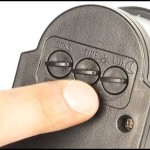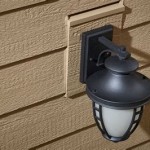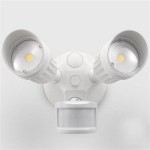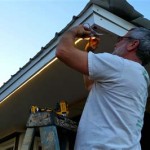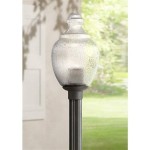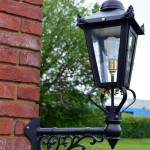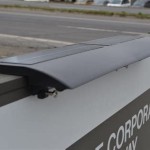How to Run Outdoor Conduit
Running conduit outdoors provides a safe and protected pathway for electrical wiring, shielding it from the elements and physical damage. Proper installation is crucial for ensuring the longevity and safety of the electrical system. This article outlines the necessary steps and considerations for effectively running conduit outdoors.
Planning and Preparation
Thorough planning is the foundation of a successful conduit installation. Before beginning any work, consider the following key points:
1. Local Codes and Permits: Consult local building codes and regulations regarding conduit installation. Obtain necessary permits before commencing any work.
2. Wiring Needs: Determine the type and size of wiring to be run through the conduit. This will inform the conduit size and material selection.
3. Conduit Path: Carefully plan the conduit route, considering potential obstructions, ease of access for future maintenance, and aesthetic impact.
4. Conduit Material: Select the appropriate conduit material based on the environment and application. Common options include PVC, metal (such as galvanized rigid conduit or EMT), and liquid-tight flexible metal conduit (LFMC).
5. Necessary Tools and Materials: Gather all required tools and materials before starting the installation. This typically includes conduit, fittings, connectors, fasteners, wire, a conduit bender (if necessary), fish tape or wire pulling lubricant, and appropriate safety equipment.
Mounting the Conduit
Securing the conduit properly is vital for its stability and protection of the wiring within. Consider the following:
1. Surface Mounting: Use appropriate straps, clamps, or brackets to secure the conduit to the mounting surface. Ensure proper spacing between supports, adhering to local codes and manufacturer recommendations.
2. Underground Installation: For underground runs, dig a trench of appropriate depth, typically 18-24 inches, depending on local codes. Lay the conduit in the trench and ensure it is surrounded by a layer of sand or gravel for drainage and protection. Bury the conduit according to code specifications.
3. Overhead Runs: When running conduit overhead, use appropriate hangers or supports to secure it to the structure. Ensure adequate clearance from other utilities and structures.
Making Connections and Bends
Proper connections and bends are essential for maintaining the integrity of the conduit system.
1. Cutting Conduit: Use a hacksaw or specialized conduit cutter to cut the conduit to the required lengths. Ensure clean, square cuts to avoid damaging the conduit and ensure proper fitting connections.
2. Bending Conduit: If bends are required, use a conduit bender to create smooth, gradual bends. Avoid kinking the conduit, which can restrict wire pulling and damage the wiring.
3. Connecting Conduit: Use appropriate fittings and connectors to join sections of conduit together. Ensure tight, secure connections to prevent moisture and debris from entering the conduit.
Pulling Wire Through Conduit
Once the conduit is installed, the wiring can be pulled through. This process requires careful execution to avoid damaging the wires.
1. Fish Tape or Wire Pulling Lubricant: Use a fish tape or wire pulling lubricant to guide the wires through the conduit. Attach the wires to the fish tape or coat them with lubricant to facilitate smooth pulling.
2. Pulling the Wires: Carefully pull the wires through the conduit, avoiding excessive force which can damage the wiring insulation. If multiple wires are being pulled, ensure they are bundled neatly.
3. Wire Connections: Once the wires are pulled through, make the necessary connections at each end of the conduit run, following appropriate wiring practices and ensuring proper grounding.
Sealing and Finishing
Proper sealing prevents moisture and debris from entering the conduit system.
1. Sealing Ends: Seal both ends of the conduit run with appropriate sealing fittings or caps to prevent the ingress of water, insects, and other contaminants.
2. Expansion Fittings: For long runs, consider using expansion fittings to accommodate thermal expansion and contraction of the conduit, preventing stress and potential damage.
Inspection and Testing
After installation, ensure the system's safety and functionality.
1. Visual Inspection: Thoroughly inspect the entire conduit run for any damage, loose connections, or other issues.
2. Testing: If required by local codes, test the wiring for continuity and insulation resistance to ensure proper installation and functionality.
Grounding and Bonding
Proper grounding and bonding are essential for electrical safety.
1. Grounding: Ensure the conduit system is properly grounded to protect against electrical shock hazards.
2. Bonding: Bond all metal components of the conduit system to create a low-impedance path for fault currents.

How To Run Electrical Wiring Outside Family Handyman

Running Power To An Outbuilding Fine Homebuilding

Basic Outdoor Wiring Comes With Safety Precautions

How To Run Underground Power A Shed The Easy Way

How To Run Electricity A Shed Diy Step By Guide At Improvements

Basic Outdoor Wiring Comes With Safety Precautions

Running Power To An Outbuilding Fine Homebuilding

Running Power To An Outbuilding Fine Homebuilding

How To Run Conduit Through Exterior Wall Aerosusa

How To Install Underground Electrical Wiring Pro Tool Reviews
Related Posts
